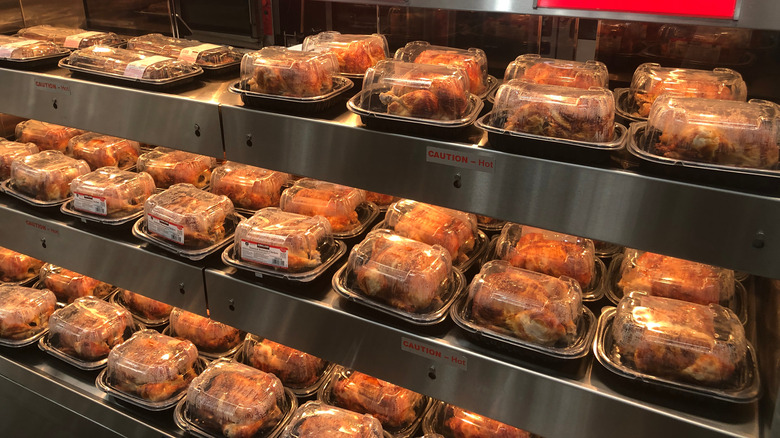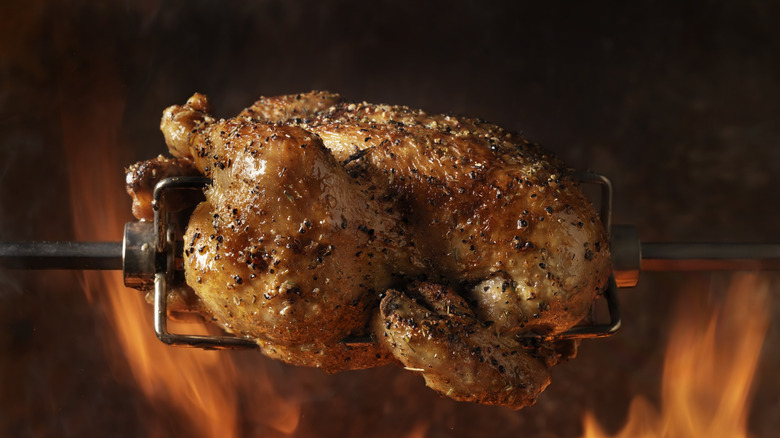What Happens To Costco Rotisserie Chickens That Exceed The 2-Hour Shelf Life
Anyone who doesn't like rotisserie chicken has probably never had the pleasure of digging into a beautifully bronzed bird from Costco. One of their most iconic offerings, Costco's rotisserie chickens have somewhat of a cult following, and for good reason. Not only are they seasoned to perfection, the whole chickens are also incredibly succulent, and boast the modest price tag of just $4.99. Their other calling card, of course, is that they're always fresh. In fact, no bird sits on a shelf for more than two hours. Naturally, this begs the question, what exactly happens to all of those unsold rotisserie chickens once they exceed their time stamp?
Contrary to what you might have thought, unsold chicken isn't tossed into the bin. Instead, it's actually repurposed. In fact, Costco explains that all of the meat from leftover rotisserie chickens is used to make an assortment of chicken-based goodies found at their deli counter. After bits of skin and bones are removed, it's chopped or shredded into numerous prepared foods, which are then kept safely refrigerated until they're sold.
As for which items are typically crafted with rotisserie chicken, anything from soups to salads to pot pies are a possibility. Additionally, even kits like an enchilada bake can feature flavorful pieces of rotisserie chicken. However, exact offerings (as well as repurposing procedures) can vary based on the Costco location.
Repurposing rotisserie chicken has its benefits
Essentially, rotisserie chickens are removed and replaced with fresher birds due to food safety reasons. While Costco's spit-roasted chickens are kept warm under heating lamps, temperatures can plummet over time, prompting them to enter what the USDA classifies as the "danger zone." Since harmful bacteria can flourish exponentially when foods are left to sit for longer than two hours at less than ideal temperatures, rotisserie chickens must be pulled from shelves and refrigerated to avoid foodborne illness and keep them safe for consumption.
Yet, rather than keep the chickens whole, Costco relies on a more creative solution. Whether it be chicken, ground beef, or otherwise, any still-safe-to-eat foods are transformed into new items, which acts as a sustainable way to reduce unnecessary food waste. Likewise, giving ingredients a second life also ensures profits, while keeping production costs low. As a result, this allows prices to remain favorable for Costco customers. In essence, everyone wins — that is, unless you're partial to a hot and juicy, fresh-off-the-spit, rotisserie chicken...
If wraps and bakes and salads loaded with rotisserie chicken aren't quite your vibe, we won't fault you for sticking with a freshly cooked bird. Just remember to abide by the two-hour safety limit and store leftovers in the fridge where they'll keep for days, giving you plenty of time to ponder how to revamp them. After all, if repurposing rotisserie chicken is good enough for Costco, it's good enough for us!

